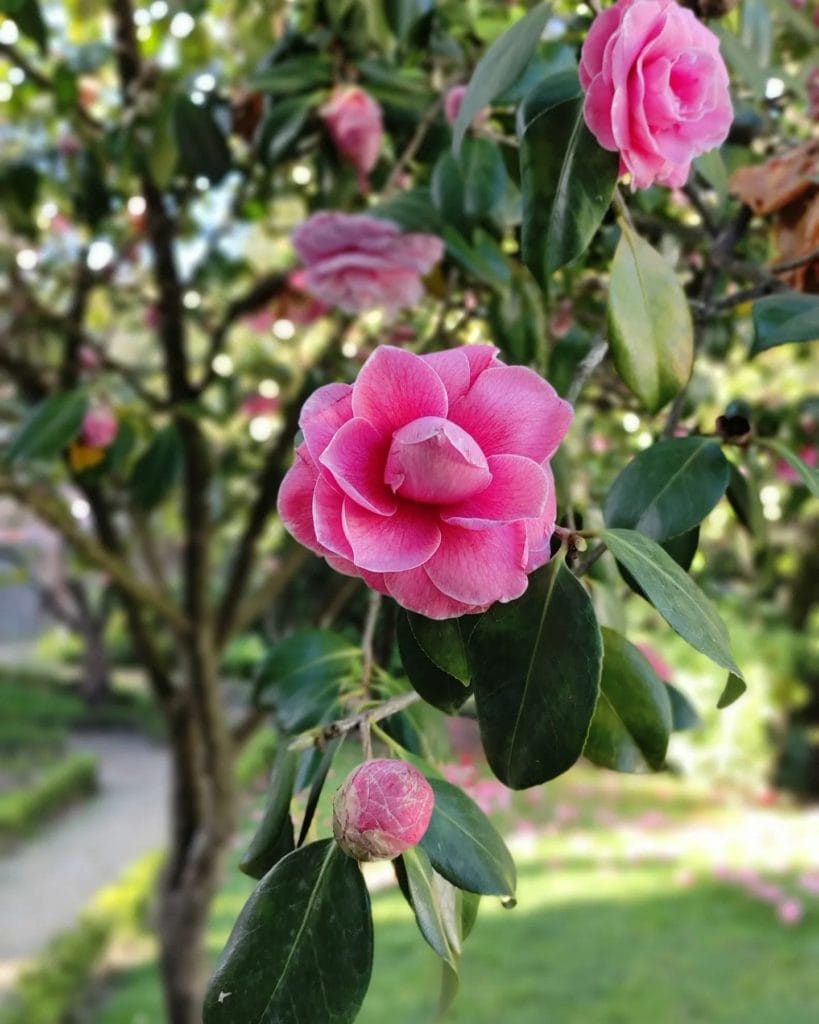Camellias with History: Augusto Leal de Gouveia Pinto (125 years old)
This remarkable camellia originates from a probable mutation or sport of the famous Mathotiana, widely recognised for its beauty and ornamental value. It was developed by Augusto Leal de Gouveia Pinto at his Quinta da Cheira, located in the village of Godinhela, in Miranda do Corvo, Portugal. After the death of its creator, it became known as ‘Leal’ and was commercialised by the Real Companhia Hortícola-Agrícola Portuense from 1899 onwards, taking the name of its creator.
This cultivar is distinguished by having both a peony shape and a formal folded shape, with a diverse colour palette. Its mutations include specimens with a uniform white and red colour, as well as variations that combine these shades with the traditional pink, in more or less violet or light tones. This diversity of characteristics suggests that the plant was probably obtained by hybridisation rather than mutation. Augusto Leal was known for his cross-breeding experiments, which reinforces the hypothesis that the Mathotiana participated as a pollen donor or recipient, giving rise to a seed that thrived. The original specimen still flourishes in the romantic garden of Quinta da Cheira.
The Quinta, which was later inherited by the architect, pianist and composer José Luís Tinoco, is associated with a rich cultural heritage. Tinoco, born in Leiria in 1932, stood out as the author of outstanding works such as ‘No Teu Poema’, immortalised by Carlos do Carmo, and was the winner of the 1975 Song Festival with ‘Madrugada’.
Internationally, this camellia is part of the best collections, having been awarded the Royal Horticultural Society’s Diploma of Merit in 1958 and was among the 200 most remarkable plants in the world during the society’s bicentenary celebrations in 2004. At national level, it continues to win first places in camellia exhibitions, being a symbol of excellence and beauty.
Casa São Roque offers visitors the chance to take a guided tour of the centenary camellias (by appointment), classified by Professor Armando Oliveira and António Assunção, in March 2019. Book your guided tour of the centenary camellias here.

